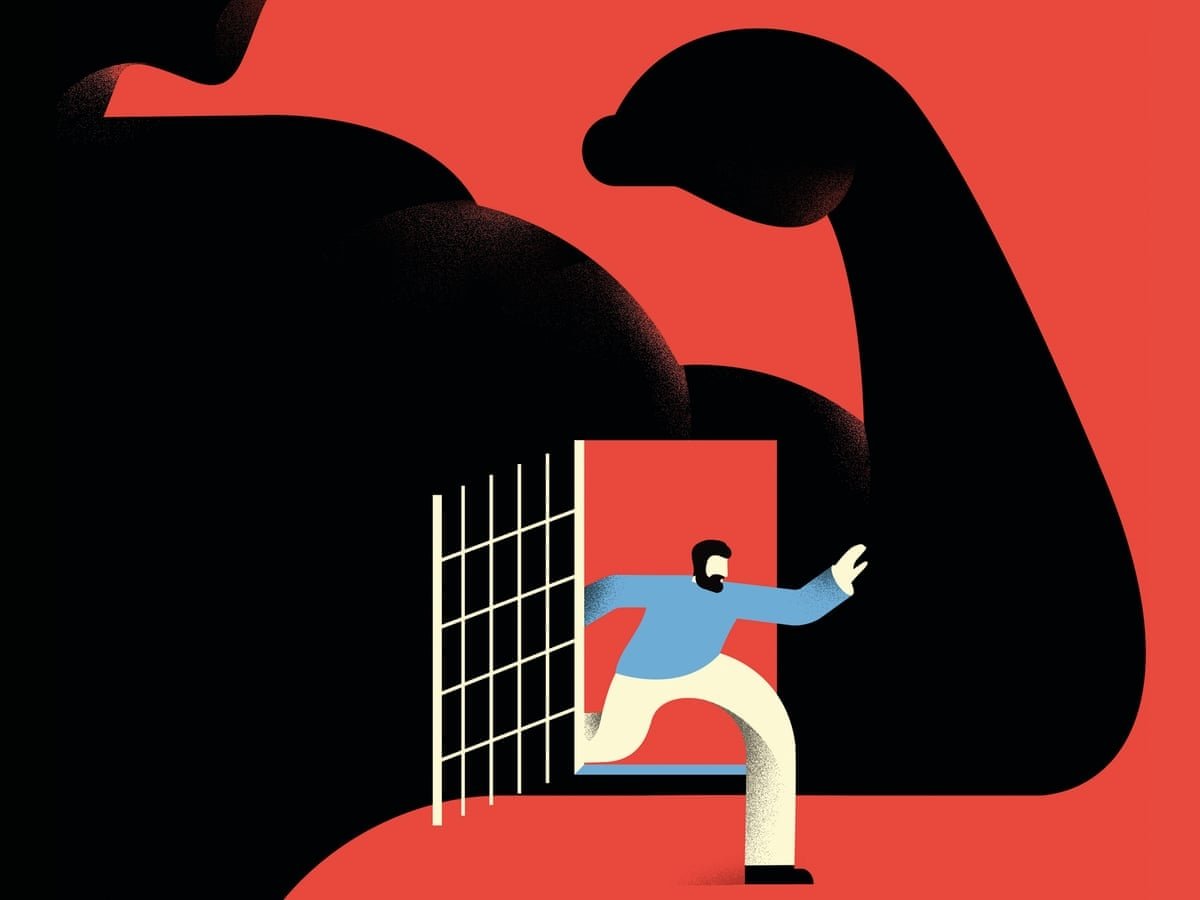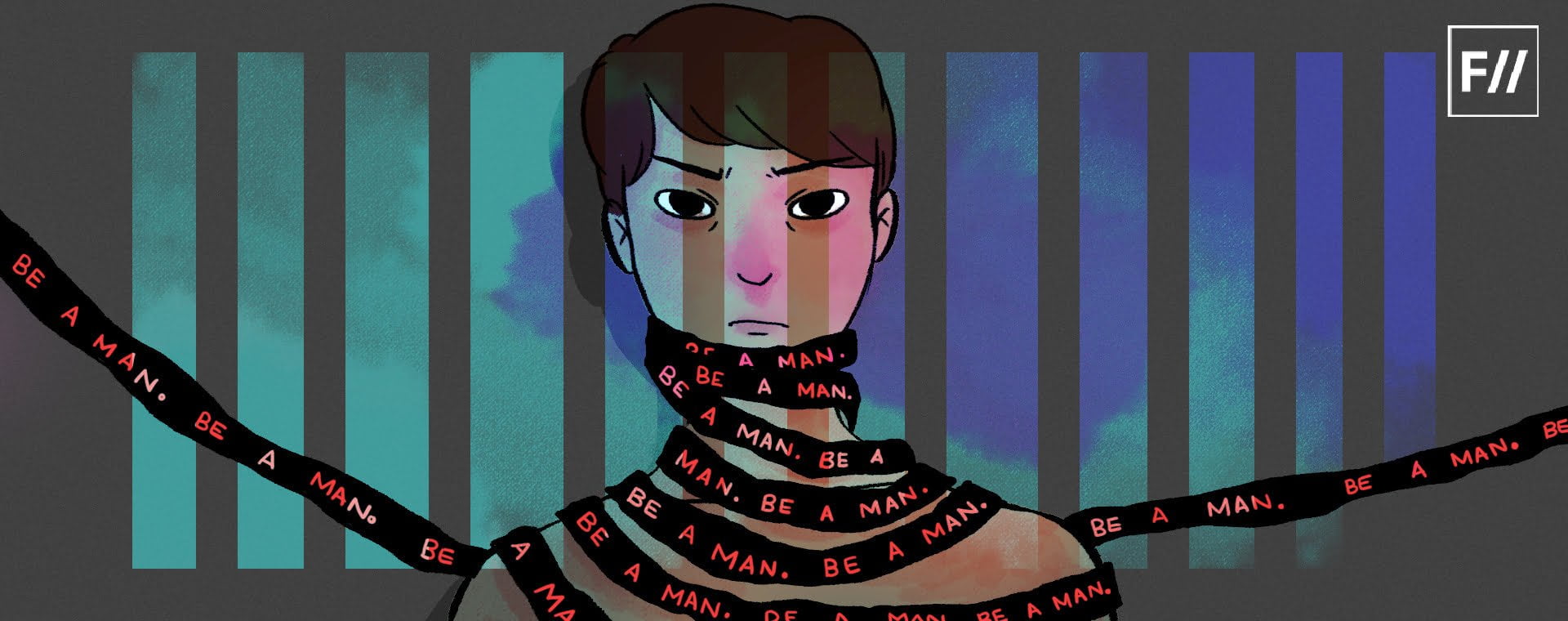Editor’s Note: FII’s #MoodOfTheMonth for October, 2021 is Navigating Complex Emotions. We invite submissions on coping with complicated feelings, throughout this month. If you’d like to contribute, kindly email your articles to sukanya@feminisminindia.com
The recent spur of conversations on mental health after the COVID-19 crisis has unveiled the stigma about mental health in our society. The discourse on mental health has highlighted that mental health is very much enmeshed with our social fabric that it impinges on our day-to-day activities and these conversations are not unique to the COVID-19 crisis.
Mental health facilities remain inaccessible and unaffordable to most of the sections of our society. The underfunded public health system, persisting social inequities and cultural experiences bar the avenues to achieve mental wellness as a society.
One of the reasons other than the lack of healthcare facilities and awareness programmes on mental health issues is that seeking mental health care is often seen as a major taboo and remains unacknowledged. Gender roles and expectations play an important role in stemming and sustaining stigma around mental health.
The social and historical construction of masculinity and femininity as diametrically opposites to each other maintains a violent power structure. Our socialisation compels us to learn ‘masculinity’ to be naturally associated with manhood, power, and domination. It also reduces ‘masculinity’ as a characteristic or expression that is essential only to the high caste cis-het male body.
The construction of masculinity as men’s estate
From childhood, we receive different messages about what constitutes a ‘real man’ or a ‘real woman’. Through various social and cultural processes such as cinema and popular media, an ideal masculinity is conveyed through a high caste cis-het male body which also embodies aggressive, violent, and threatening traits. As spectators, we are left with an idea that expressing emotions and vulnerabilities or being ‘feminine‘ is a sign of weakness.
We have been told that ‘real men‘ do not cry, are not too emotional or compassionate, do not feel pain and cannot be vulnerable. We are fooled into thinking that if we try to “man up” we would less likely be experiencing any violence or abuse. Our society gives immense privilege to the cis-het man by projecting the stereotype of machismo and the performance of dominant masculinity. It only accounts for physical violence and refuses to accept the severity of the emotional violence that is inflicted upon each body.
It is often assumed that only trans and gender non-conforming people experience gender role distress but everyone whether trans or cis-gendered people are forced to conform to the gender norms. This imposition of gender roles and expectations have a detrimental impact on an individual’s mental health and dismisses the experiences of gender dysphoria altogether.
It inflicts violence on each of us and disempowers our sense of an intimate self. It robs us, as a society, of a possibility for expressing ourselves on our own terms and for being assertive of our vulnerabilities. As a transmasculine person, I have worried about my masculinity being too feminine. I have often tried to shame myself for my feminine traits as it has remained the source of dysphoria. However, I have also realised that it has a lot to do with the internalised femmephobia that I have learned since my childhood.
The queer-feminist framework and trans spaces however, have welcomed us to witness the possibility of alternative masculinities and have served as a safe space for the community. In the book ‘Female Masculinity’, Jack Halberstam explores a method to read masculinity without men or maleness

It has also not been easy to take in the fact that transitioning will make me complicit in subjugation and violation of other marginalised sections of society. My experiences of being in boys club often informed me that I must make peace with the general misogynist remarks and sexist jokes to not qualify as a person with insufficient masculine traits.
The struggle to find a space for my trans-masculinity has had immense consequences on my overall mental health. The belief that ‘masculinity is static’ and that there is only one form of masculinity – violent and dominating, have ruined every conversation around mental health. Trans-masculine communities have faced the erasure of their identity within the early feminist spaces as well. The term ‘trans’ is often conflated with the trans-feminine community in the social as well as legal discourses. On the other hand, the trans masculine community have been alleged of gender-treason to achieve male privilege by many cisgender lesbian feminists.
Also read: When Rakesh Tikait Cried Like A Man: Deconstructing Masculinity
The queer-feminist framework and trans spaces however, have welcomed us to witness the possibility of alternative masculinities and have served as a safe space for the community. In the book ‘Female Masculinity’, Jack Halberstam explores a method to read masculinity without men or maleness.
The work analyses various mainstream Hollywood films and argues that masculinity should not be understood as tied to biological maleness or a cis-het white male body. The performances of masculinity do not always embody sexism and misogyny. This work makes masculinity a safe arena for feminine identified people by positing female and alternative masculinities. However, this line of thought also offers us to reflect upon the question of the construction of masculinity and its linkages with the institution of caste in the Indian context.

In the present context of cultural nationalism, a Hindu dominant-caste male body is an epitome of national manhood, and every Hindu dominant-caste female body is deemed to be radiating the divine femininity through the depiction of Bharat Mata (Mother Nation). On the other hand, when masculinity inhabits the body of a Dalit person, it is often projected as docile, hardworking but inferior.
Dalit women, on the other hand, also have historically been denied femininity, often gendered as masculine or manly and yet have been hyper-sexualised. The Dalit community have been reclaiming their masculinity, challenging such stereotypes through cultural performances and art forms that are rooted in anti-caste politics (Gupta 2010).
Alternative masculinities and new possibilities
This is not to say that male privilege is not a real phenomenon but to fully understand masculinity, it is crucial to dissociate masculinity from an upper-caste Hindu cis-het male body and shift our lens to alternative and marginalised masculinities. These marginalised masculinities possess the potential for igniting a dialogue around a holistic approach to mental health and to articulate a language for social change.
Trans community faces violence and harassment in various spheres and are denied basic dignity for transgressing gender norms. This is the price that one pays to be themselves, to seek freedom, in this patriarchal structure.
Trans masculinity as an alternative allows us to reflect the power structure and demands a continuous questioning of one’s privileges. It pushes us to imagine new possibilities, to have a shared sense of human vulnerabilities. Masculinity that safeguards spaces for emotional wellbeing, embraces soft behaviour patterns and originates from feminist and anti-caste politics to challenge the structures of heteronormativity, caste ideology and patriarchal masculinity must be imagined
In our patriarchal culture, the disdain towards one’s traits whether masculine or feminine emotionally alienates an individual. The burden of gender roles, expectations and normative masculinity lead to the lack of self-care and self-love. This hostile environment of alienation where one is discouraged to share their emotions, feelings and which denigrates our expressions as weakness is traumatising. It becomes difficult for all of us (cis or trans) to heal from the trauma of the gender binary.

The conversation on men and masculinity would be incomplete without an engagement with feminist politics and vice-versa. Our strength lies in unlearning and reclaiming masculinity from the cusp of traditional gender norms.
Trans masculinity as an alternative allows us to reflect the power structure and demands a continuous questioning of one’s privileges. It pushes us to imagine new possibilities, to have a shared sense of human vulnerabilities. Masculinity that safeguards spaces for emotional wellbeing, embraces soft behaviour patterns and originates from feminist and anti-caste politics to challenge the structures of heteronormativity, caste ideology and patriarchal masculinity must be imagined.
Feminist politics and an alternative vision of masculinity can help us all to seek help, to heal together and to recover from the rigidities of gender norms.
As bell hooks brilliantly writes in her book The Will to Change, “When men practice integrity, they accept that part of the work of wholeness is learning to be flexible, learning how to negotiate, how to embrace change in thought and action. The ability to critique oneself and change and to hear critique from others is the condition of being that makes us capable of responsibility”.
In this regard, we must acknowledge that masculinity does hold structural power and privilege, and we must reclaim masculinity from the narratives of violence and destruction and articulate it with the language of love, empathy, and compassion.
References
Halberstam, Jack. Female masculinity. Duke University Press, 2019
Gupta, Charu. “Feminine, criminal or manly? Imaging Dalit masculinities in colonial north India.” The Indian Economic & Social History Review 47, no. 3 (2010): 309-342
Hooks, Bell. The will to change: Men, masculinity, and love. Beyond Words/Atria Books, 2004
Also read: Unpacking Dileesh Pothan’s Joji: The Parental Abuse, Toxic Masculinity, Autonomy & More
Mridula has completed their masters in Women’s Studies from Tata Institute of Social Sciences, Mumbai and is deeply interested in feminism, queer theory and poetry. Mridula can be found on Instagram.




